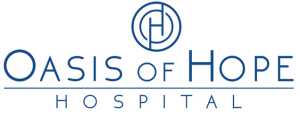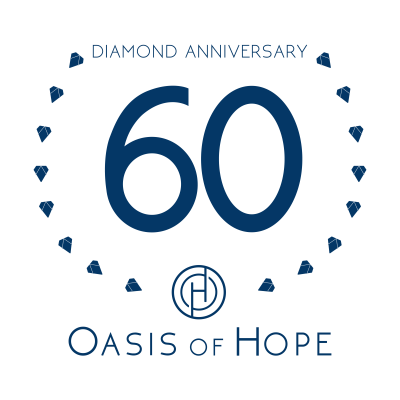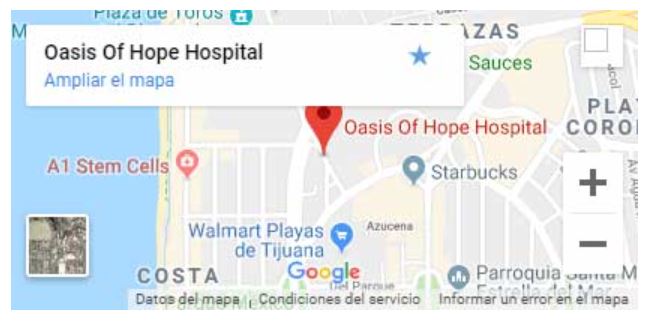[vc_row full_width=”” parallax=”” parallax_image=””][vc_column width=”1/1″][vc_column_text]
Diet and Exercise in Cancer | Oasis Of Hope Cancer Treatment Center
Throughout most of the twentieth century, age-adjusted death rates for many of our most common cancers were vastly lower in much of the Third World than in comparatively wealthy industrialized countries such as the United States. These types of cancers thus became known as “Western cancers.” They include cancers of the breast, prostate, colon, ovary, uterine endometrium, and pancreas – cancers that, along with tobacco-induced lung cancer, constitute the main causes of cancer mortality in the U.S. today.
Why have these cancers been so less common in poorer societies? The most reasonable current explanation seems to be that, in poor societies, blood levels of two key growth factors – insulin and free insulin-like growth factor-I (IGF-I) – tend to be much lower than in wealthier countries (1,2). Insulin and/or IGF-I stimulate the proliferation of the epithelial tissues from which these cancers arise. They also inhibit the process of apoptosis, which is an important way in which the body gets rid of cells which have sustained mutagenic DNA damage (3). The combination of increased proliferation – which makes DNA damage more likely – and suppression of the mechanism that rids the body of mutated cells, is a potent stimulus to cancer induction.
What aspects of a Western diet and lifestyle are primarily responsible for our higher levels of insulin and free IGF-I? We speak of “free” IGF-I because there are various proteins in the blood that bind to IGF-I, rendering it inactive. Only the unbound “free” IGF-I can interact with cell receptors. Factors such as abdominal obesity, fatty diets, especially those rich in saturated fats, and sedentary lifestyle are typically associated with increased blood levels of insulin. Under these conditions, skeletal muscle becomes less sensitive to the glucose-transporting activity of insulin. Because of insulin resistance, the body tends to increase the secretion and slow the removal of insulin to compensate for this. This increase in insulin levels tends to increase blood levels of free IGF-I, since insulin acts on the liver to boost IGF-I production while also slowing the production of a binding protein, IGFBP-1, that antagonizes IGF-I’s activity (4).
Another lifestyle factor that promotes increased IGF-I levels is a relatively high intake of “high quality” protein. In Third World societies where people eat a mostly plant-based vegan diet, total daily protein intakes tend to be relatively low. The proteins consumed tend to be lower in certain nutritionally essential amino acids, such as methionine, for example, than the “high quality” animal proteins that predominate in Western diets. The relative paucity of certain essential amino acids in vegan diets of moderate protein content can lead to a decrease in the liver’s production of IGF-I, and an increase in IGFBP-1 production (5,6). It’s no coincidence that, in rural China, where most people have eaten a quasi-vegan diet for centuries, the provinces with the highest intakes of animal protein are the ones at highest risk for most types of cancer. This has been revealed by the world’s most ambitious epidemiological investigation, the China Study (7,8).
These considerations imply that lean people who consume quasi-vegan diets that are low in fat and moderate in protein, and who get regular exercise, can be expected to have relatively low levels of both insulin and free IGF-I, and to enjoy decreased risk for Western cancers. At least until recently, a high proportion of people in Third World societies fit this description. As noted, the relatively high levels of insulin and free IGF-I characteristic of “advanced” societies can act directly on their target tissues to promote cancer induction. They can also act in indirect ways to boost cancer risk. In particular, this pattern of hormone activity tends to accelerate sexual maturation in girls and increase blood levels of free sex hormones (9,10). These circumstances are known to increase risk for breast and endometrial cancers. Obesity, per se, increases estrogen levels in postmenopausal women, as fat cells are capable of producing estrogen from other circulating steroid hormones (11).
Of course, at Oasis of Hope we are primarily focused on treating cancer rather than preventing it. What is the relevance of these considerations to cancer treatment? Insulin and/or free IGF-I have growth factor activity for many, though not all, cancers. This growth factor activity makes cancer cells multiply faster, increase their capacity to spread throughout the body, evoke angiogenesis, lessen their rate of spontaneous cell death, and render them less sensitive to elimination by chemotherapy (12). In other words, if a cancer is sensitive to either insulin or free IGF-I, a patient’s prognosis will be better if the insulin and free IGF-I levels are kept relatively low. Admittedly, some cancers aren’t responsive to these hormones. Since there aren’t any simple inexpensive tests that can determine this, it’s prudent to assume that a cancer is responsive to these hormones.
Working with volunteers enrolled in the Pritikin diet-exercise program, Dr. James Barnard and colleagues of UCLA have done some studies that beautifully illustrate these points (13,14). They took serum samples from patients who were about to enroll in the program, and then took serum from the same patients after they had been on the program for 3 weeks. They also obtained serum from people who had followed the Pritikin Program for a number of years. To clarify, the Pritikin Program requires people to eat an unrefined quasi-vegan diet, very low in total fat, moderate in protein, and high in carbohydrate, while engaging in regular aerobic exercise. People who are overweight typically lose weight rapidly, a factor that contributes to the impact of this program on insulin sensitivity. As expected, Dr. Barnard was able to confirm that, after only 3 weeks, this regimen was associated with rather substantial reductions in blood levels of both insulin and free IGF-I.
These researchers then took human prostate cancer cell lines and incubated them in the various serums obtained from the Pritikin patients and the long-term Pritikin devotees. They observed that the cancer cells grew more slowly, and were more prone to apoptotic cell death, when incubated in the post-Pritikin serum (the serum obtained after 3 weeks of the program) than when incubated in the pre-Pritikin serum. The serum from long-term Pritikinists was even less supportive of cancer cells growth. The cancer cells grew 44% more slowly, and had a manifold higher rate of spontaneous cell death as contrasted to cells grown in pre-Pritikin serum. More recent studies with breast cancer cell lines have yielded similar though less dramatic findings (15).
Meanwhile, Dr. Dean Ornish has been conducting a remarkable study with volunteers who are in the early stages of prostate cancer (16). Volunteers were randomized either to participate in a special diet-lifestyle program or to receive standard care. The program consists of a very-low-fat (about 10% fat calories), wholly vegan diet, emphasizing whole foods, complemented by regular aerobic exercise and stress control training. This program is rather like a more stringently vegan version of the Pritikin Program. Ornish is following the clinical progress of these patients by monitoring their PSA levels. During the first year, PSA decreased on average by 4% by those enrolled in this lifestyle program, while on average it rose 6% in the control group. Furthermore, as in Barnard’s Pritikin studies, a prostate cancer cell line grew much less rapidly in serum obtained from patients enrolled in the lifestyle program, as compared to serum obtained from the patients serving as controls.
Of related interest are recent studies in women with breast cancer. Those with relatively high insulin levels have a decidedly poorer prognosis than those with relatively low insulin levels (17,18). In patients with either breast or colorectal cancer, significant aerobic exercise training – equivalent to brisk walking for a half-hour a day – has been linked to improved prognosis. This is hardly surprising since exercise tends to improve insulin sensitivity. The effect was substantial as optimal levels of exercise were associated with reductions in risk of cancer mortality of 50% or more (19-21). Studies also demonstrate that exercise training prior to and during cancer chemotherapy may have a favorable impact on immune function, tends to offset the fatigue often associated with such therapy, and may have other favorable effects on perceived quality of life (22,23).
We thus have strong reason to suspect that lifestyle factors can have a major impact on survival in prostate, breast, and colorectal cancers. Not unlikely, comparable findings will be established with respect to certain other cancers as well once the pertinent studies are conducted.
Oasis of Hope thus recommends its cancer patients to modify their lifestyles in ways that will reduce their blood levels of insulin and free IGF-I. This recommendation is of particular importance for patients with breast, colorectal, or prostate cancer. It may be prudent for patients with other types of cancer to heed this advice as well.
Ideally, it is desirable for patients to adopt a wholly plant-based diet. The exception is fish oil capsules, which will not have a negative impact on insulin sensitivity. This diet is low in total fats (under 15% of calories) and moderate in protein. Bean and soy consumption should be moderate as well. Since high-glycemic-index carbohydrates can markedly boost post-meal insulin levels, it may be advisable to emphasize whole-food carbohydrate sources that are relatively low in glycemic index. This includes pastas, most whole fruits, and whole-grain products that are relatively structurally intact. For example, sprouted wheat breads as compared to wheat flour breads.
This dietary program should be complemented by regular aerobic exercise. Exercise where the patient supports his/her own weight, such as brisk walking, stair-climbing, elliptical gliders, or treadmills, is preferable. For patients less than ideally thin, Oasis of Hope has a very effective regimen for fat loss. The Oasis of Hope Leanness Program is based on a “mini-fast with exercise” strategy developed by Austrian physician Dr. Babak Bahadori (24). When volunteers from the hospital staff tried this program on themselves, the participants on average lost one-quarter of their initial body fat. The best thing about this program is that it is sustainable for life, and does not require calorie counting or carb avoidance.
For patients that are unwilling to adopt a fully vegan diet, a more modest benefit can result by adopting a “Mediterranean” diet in conjunction with regular exercise. The “Mediterranean” approach to eating discourages the consumption of red meat and fatty dairy products, allows moderate amounts of lean white meat or fish, and emphasizes large intakes of fruits, vegetables (often sautéed in olive oil), beans, and whole grains. This approach tends to improve insulin sensitivity because it minimizes intakes of saturated fat while often increasing those of unsaturated fat. A low ratio of saturated to unsaturated fats tends to improve insulin sensitivity (25). This strategy probably won’t lower free IGF-I or boost insulin sensitivity as effectively as a low-fat vegan diet, but it is likely to be protective relative to the fatty meat-based diets favored by most Americans.
The Mediterranean dietary tradition encourages moderated consumption of wine with meals. In fact, there is some evidence that moderate regular alcohol consumption (beer or liquors count too, not just wine) can have a favorable influence on insulin sensitivity (26), is associated with slightly lower free IGF-I levels (27,28), and may even increase life expectancy (29,30). So there doesn’t seem to be any good reason why cancer patients should abstain from alcohol if consumption stays in a healthful range. Excessive alcohol intake can degrade insulin sensitivity and create many health risks. For men, that means no more than three drinks a day. Since women absorb alcohol more efficiently, they should consume no more than two drinks a day.
Are there any foods that may be specifically beneficial to cancer patients? Certain vegetables – notably cruciferous vegetables (cabbage, broccoli, cauliflower, kale, etc.) and allium vegetables (onions and garlic) contain compounds that induce a so-called phase II response. That is, they cause the body’s cells to make higher levels of various antioxidants as well as enzymes which assist in the detoxification of carcinogens and drugs (31,32). Theoretically, this could make healthy normal tissues more resilient when they have to cope with cytotoxic chemotherapeutic drugs or radiotherapy. Whether this strategy could be of real practical importance to patients undergoing chemotherapy is not yet clear. In any case, such foods might reduce risk for developing additional cancers, and they certainly won’t harm the overall health of a person.
Another food with particular promise for cancer patients may be spirulina. Very recent research shows that spirulina contains high amounts of a phytonutrient known as “phycocyanobilin” (PCB for short – not to be confused with the polychlorinated biphenyls that are environmental hazards!) that can act as a potent inhibitor of the chief source of excess oxidant stress in the body, the enzyme complex NADPH oxidase (33,34). There is growing evidence that NADPH oxidase is activated in many cancers, and this activity tends to boost the proliferation and spread of cancer cells while protecting them from apoptotic cell death (35-37). Moreover, NADPH oxidase activity in endothelial cells is now known to play a key role in the process of angiogenesis (38,39). Thus, there is good reason to suspect that partial inhibition of NADPH oxidase may help to slow the spread of certain cancers, both by direct effects on cancer cells and by an anti-angiogenic effect. Oral administration of spirulina in rodents has anti-inflammatory effects that probably are attributable to inhibition of NADPH oxidase. It seems likely that suitably high intakes of spirulina would have a comparable impact in humans.
A further potential advantage of spirulina for cancer patients is that it contains polysaccharides that have immunostimulant activity when administered orally. This might boost the ability of natural killer cells or cytotoxic T lymphocytes to slow or prevent the metastatic spread of a cancer (40). Thus, until more relevant data are available, it is prudent for cancer patients to take up to two heaping tablespoons of spirulina daily (one twice daily). Spirulina is most palatable when incorporated into smoothies featuring such ingredients as fruit juice, soy milk, and bananas or other whole fruit.
The Oasis of Hope Kitchen
Virtually anyone who has had the opportunity to dine at the Oasis of Hope could testify that the food served is one of the highlights of the overall experience. Though the doctors, nurses and medical scientists do their best for the patients the true genius of the Oasis of Hope kitchen staff must be acknowledged. The food served at Oasis of Hope is consistent with the dietary principles discussed above. Everything is either vegan, or contains modest amounts of fish, chicken, or eggs, in the Mediterranean style. Whole grains are emphasized, fruits, fresh juices, beans, vegetables, and soups are available in profusion, and the dishes are almost always low in fat and salt. This may sound a bit spartan – but in fact the food is invariably delicious. The dining experience at Oasis of Hope teaches that it is feasible to eat a diet that promotes optimal health while providing real culinary pleasure at the same time. Our intent is that patients will take this insight home with them, and will continue eating healthfully in the way they have learned at Oasis of Hope.
Meal times are not just about food; they are also an occasion for friendship, camaraderie, and laughter. In the dining commons, patient and staff interact and it is often difficult to tell who the patient is because they are encouraged to dress in comfortable clothing verses the typical hospital gown that often leave much to be desired. It is frequent to see diners continuing to receive i.v. infusions of chemotherapy or vitamin C while they enjoy the delicious food. Meals are an excellent chance for patients to get to know each other better, and to share their experiences coping with cancer. It is heartwarming to see how often laughter breaks out, as diners exchange jokes and amusing anecdotes. For the patients, dining at Oasis of Hope not only nourishes the body, but also contributes to promoting their emotional and spiritual well being – it’s a key part of the healing experience.[/vc_column_text][/vc_column][/vc_row]




